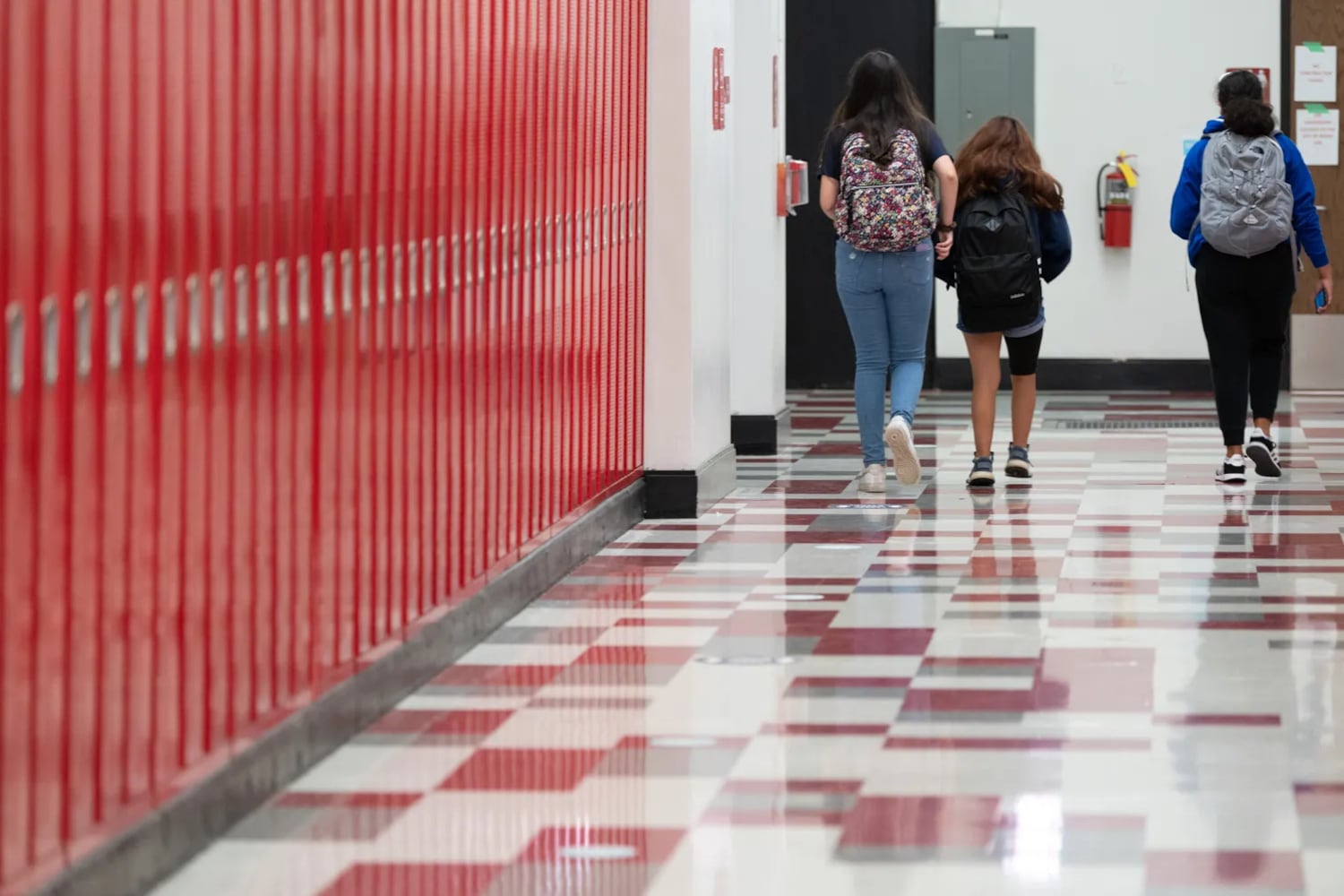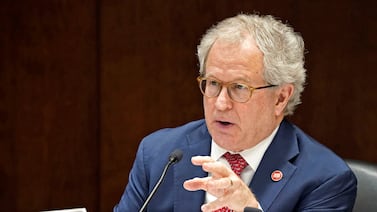Sign up for Chalkbeat Chicago’s free daily newsletter to keep up with the city’s public school system and statewide education policy.
Youth organizer Maria Paula Degillo used to protest in downtown Chicago against the high rates of suspensions and expulsions for students of color.
Now, she collaborates with Chicago Public Schools to create safe school environments without harsh discipline and over policing.
Today, Degillo, with the group Voices of Youth in Chicago Education, is joining the district’s Chief of Safety and Security Jadine Chou at a City Club of Chicago event to highlight the partnership forged between the district and community organizations over the course of the last decade to improve school safety.
The event comes as Chicago says it has made significant progress disrupting the school-to-prison pipeline. Suspensions have plummeted from nearly 50,000 in 2013-14 to less than 10,000 in 2021-22. And the number of police officers on campus has been more than cut in half.
What’s more, new research released by the University of Chicago Education Lab earlier this month found student arrests dropped at schools where restorative practices were implemented and students said they felt a stronger sense of safety and belonging.
Degillo, Chou, and others who have been working on this issue for more than a decade say Chicago’s approach to school safety could be a blueprint for other schools across the country.
“When we talk about safety in schools,” Degillo said, “it’s about young people and their parents being able to be at the decision making table so that they can decide what they feel makes them safe.”
Chicago makes slow shift to restorative discipline
Chicago’s work to disrupt the school-to-prison pipeline started years before national debates around school safety and the presence of police in schools heated up in 2020.
When Chou took the job as safety and security chief 12 years ago, she said she was the first person not from the police department to fill the role.
“It was not easy at first,” she said. “I think a lot of people were stuck in that same paradigm that, you know, if we go to restorative practices, bad things will happen.”
Early in her tenure, the school board approved several changes to the student code of conduct that activists, such as Degillo, pushed: limiting the use of automatic suspensions and redefining what behaviors deserved out-of-school punishment. And the state of Illinois passed legislation, at the urging of groups like VOYCE, to limit the use of suspensions and expulsions in public schools.
During the 2013-14 school year, 22 Chicago high schools and 34 elementary schools began implementing restorative practices focused on building relationships and conflict resolution.
Researchers at the University of Chicago Education Lab studied what happened in the years that followed. In a report issued earlier this month, they found that suspensions declined at schools that implemented restorative justice, student arrests in-school fell by 35%, and out-of-school arrests dropped by 15%.
Anjali Adukia, an assistant professor at the University of Chicago Harris School of Public Policy and one of the report’s authors, said changing how schools approach student discipline doesn’t happen overnight.
She recalled talking to a teacher who saw restorative practices as “fluffy duffy stuff” that was going to take up too much time. But after trying some of the strategies, the approach made their job easier. That teacher is now a restorative practices coach, Adukia said.
Chou, with CPS, said the research confirmed what she felt she already knew: This was actually working. It also “refutes the myth” that restorative practices lead to “no consequences” and everything being “out of control.”
“The research actually shows that you do good both by keeping children in the classroom through these restorative practices,” Chou said. “And in fact, the climate is calmer.”
Removing police from schools is just one piece of the puzzle
In addition to its work to reduce suspensions and expulsions, Degillo’s organization Voices of Youth in Chicago Education, or VOYCE, was on the forefront of the movement to remove police officers from schools.
This was before a 2019 federal consent decree over the city’s police department pushed the district to rethink the role of police in schools and before the racial unrest in 2020 after the police killing of George Floyd.
Around that time, the district began to collaborate with community organizations, including VOYCE, on an effort known as Whole School Safety. The approach also gave local school councils the ability to vote on whether or not to keep school-based police officers, commonly referred to as SROs.
An initial wave of schools removed police in 2020, but the momentum has slowed more recently, with just two schools voting to remove officers last school year.
In June, the school board approved a $10.3 million contract with the police department to station 57 officers at roughly 40 high schools that have voted to keep them. It’s a fraction of the 140 stationed at district-run high schools in 2019, which cost roughly $33 million that year.
Chicago initially faced some criticism for pushing the decision about whether to keep police in schools down to local communities. But the ground-up approach may prove to be more sustainable, Chou said, noting other districts who removed police in 2020 only to return them more recently.
That was the case in Denver, where the school board voted in 2020 to phase out police from schools only to reverse that decision in a divided vote this past June after a shooting in March at one of the district’s high schools.
Although Degillo said VOYCE would still like to see police removed from schools altogether, she said allowing communities to decide is just as important.
“The goal is to create a process in which people are not relying on knee-jerk reactions to safety, “ Degillo said. “There’s so much more to school safety. The goal is to create that safe, healthy, equitable learning environment.”
Becky Vevea is the bureau chief for Chalkbeat Chicago. Contact Becky at bvevea@chalkbeat.org.





